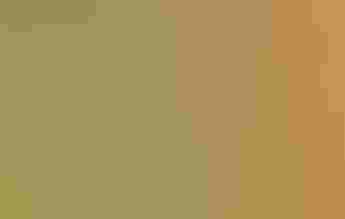
La página que intenta visitar sólo está disponible en inglés. ¡Disculpa!
The page you are about to visit is currently only available in English. Sorry!

Little darlings, it’s been a long, cold, lonely winter. OK, not all that cold, or for that matter long, at least here in New York, where I type these words on a balmy 56°F February afternoon. But as winters go, this one has been notably, ah, dark. And as we trudge dolefully into spring, I suspect that I am not alone in my desire to seize upon something—anything—that I can do to bring color and light to my world. Well, take heart, bird-loving citizens! Thanks to Audubon, I have found that thing: I am going to plant a garden. And I exhort you to do the same.
Not just any garden, mind you. A bird-friendly one, chockablock with plants native to my area and therefore teeming with insects upon which my bird neighbors have grown to rely for their sustenance. Here’s a particularly stark contrast that demonstrates the point: A native oak tree supports at least 557 different varieties of butterflies and moths. A non-native ginkgo? Five. For all the benefit that ginkgo provides birds, you might as well just decorate your yard with plastic flamingos.
Now, I’m basically a neophyte gardener. And the garden I create will be entirely confined within containers arrayed around an 80-square-foot urban balcony. But those aren’t objections; they’re precisely the point! Every patch of native greenery, however small, is a tangible contribution of healthy habitat for birds in need. And as for my inexperience and decidedly non-emerald thumb, that’s where Audubon comes in. Just in time for the spring-planting season, we’ve launched our Plants for Birds tool that makes it easy to identify and acquire the right plants for your location and the birds you love. Just plug in your zip code, and out pops a comprehensive list of local natives, with photos, descriptions of which birds they attract, and a handy roster of nearby (or online) nurseries that stock them. Still need help overcoming your plant-poisoning ways? You’ll get connected to one or more of the 110-plus Audubon centers and chapters that are pitching in with educational programs, native-plant sales, demonstration gardens, and other resources. (You can also find ideas and advice on our website.)
The Audubon Plants for Birds database is the only tool of its kind, which probably accounts for the fact that, since we quietly released a beta version last September, more than 90,000 people have already visited the site. Our goal is to inspire and enable the cultivation of a million native plants, including my own tiny but still significant contribution. Yours, too, I hope.